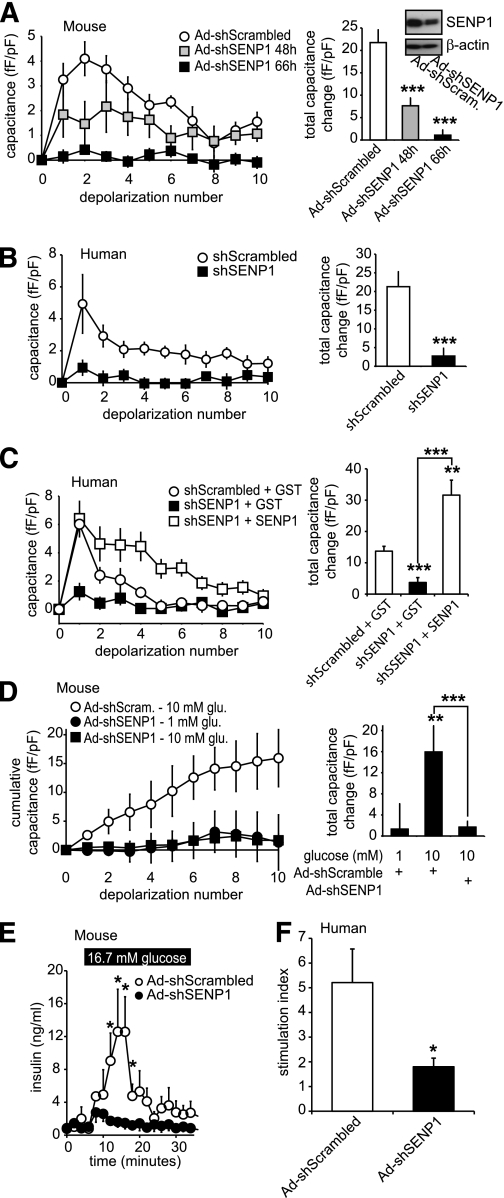FIG. 8.
SENP1 is required for glucose-stimulated β-cell exocytosis and insulin secretion from mouse and human islets. A: The capacitance response of mouse β-cells, infected with recombinant adenovirus expressing either a scrambled shRNA (Ad-shScrambled) or an shRNA targeting SENP1 (Ad-shSENP1) to a series of membrane depolarizations. The total capacitance response (right) and SENP1 knockdown by Western blot (inset) are shown. B: Same as in A but following lipid transfection of shScrambled or shSENP1 into human β-cells. C: Same as in B but upon intracellular dialysis of recombinant GST or SENP1 peptides. D: The exocytotic response of mouse β-cells, infected as in A, to a series of membrane depolarizations following preincubated at 1 mmol/L glucose and subsequent exposure to 1 or 10 mmol/L glucose for 15 min (as in Fig. 6A). The total capacitance response is shown (right). E: Insulin secretion measured by perifusion of mouse islets infected with Ad-shScrambled or Ad-shSENP1. F: Glucose-stimulated insulin responses, shown as the stimulation index (fold increase from 1 to 16.7 mmol/L glucose) of human islets infected with Ad-shScrambled or Ad-shSENP1. *P < 0.05; **P < 0.01; ***P < 0.001 vs. control or as indicated.

